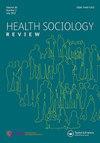澳大利亚糖尿病教育中的跨专业角色界限
IF 2.5
2区 医学
Q2 HEALTH POLICY & SERVICES
引用次数: 9
摘要
摘要糖尿病对全球医疗服务提出了挑战。糖尿病教育工作者与个人和社区合作,以减少糖尿病的影响。在澳大利亚,糖尿病教育工作者具有护理、医学或特定的联合健康背景等多种初级资格之一,并拥有糖尿病教育的认证研究生资格。最高专业机构,澳大利亚糖尿病教育工作者协会(ADEA),在其实践范围方面促进所有糖尿病教育工作者的平等。然而,在实践中,有证据表明存在不公平现象,尤其是来自护理和相关健康背景的人之间。本文使用新韦伯视角来探索“专业后”从业者群体的跨专业角色动态,他们采用共同的角色和头衔来创造职位资格级别的职业身份。数据是通过对19名利益相关者的个人访谈收集的,并使用溯因模板方法进行分析。在护士和专职健康糖尿病教育工作者之间建立并加强了不同的角色界限。糖尿病教育仅被认为是护理的一个子专业;联合健康方面的教育和资格认证受到限制;强化职业陈规定型观念和公认的职业价值观;以及护士和专职健康糖尿病教育工作者在获得药物管理方面的立法差异。本文章由计算机程序翻译,如有差异,请以英文原文为准。
Interprofessional role boundaries in diabetes education in Australia
ABSTRACT Diabetes presents a challenge to healthcare services worldwide. Diabetes educators work with individuals and communities to reduce the impact of diabetes. In Australia, diabetes educators derive from one of several primary qualifications including nursing, medicine or a specified allied health background, and have an accredited postgraduate qualification in diabetes education. The peak professional body, the Australian Diabetes Educators Association (ADEA), promotes equivalence of all diabetes educators in terms of their scope of practice. However, in practice, there is evidence of inequities, particularly between those from nursing and allied health backgrounds. This paper uses a neo-Weberian lens to explore the interprofessional role dynamics of a ‘postprofessional’ group of practitioners, who adopt a common role and title to create a professional identity at post-qualifying level. Data were collected via individual interviews with 19 stakeholders and analysed using an abductive template approach. Differential role boundaries between nurse and allied health diabetes educators were established and reinforced in several ways. Diabetes education is considered a sub-specialty of nursing only; access to education and credentialing has been restricted for allied health; reinforcement of professional stereotypes and perceived professional values; and perceived legislative differences in access to medication management for nurse and allied health diabetes educators.
求助全文
通过发布文献求助,成功后即可免费获取论文全文。
去求助
来源期刊

Health Sociology Review
Multiple-
CiteScore
7.50
自引率
0.00%
发文量
14
期刊介绍:
An international, scholarly peer-reviewed journal, Health Sociology Review explores the contribution of sociology and sociological research methods to understanding health and illness; to health policy, promotion and practice; and to equity, social justice, social policy and social work. Health Sociology Review is published in association with The Australian Sociological Association (TASA) under the editorship of Eileen Willis. Health Sociology Review publishes original theoretical and research articles, literature reviews, special issues, symposia, commentaries and book reviews.
 求助内容:
求助内容: 应助结果提醒方式:
应助结果提醒方式:


